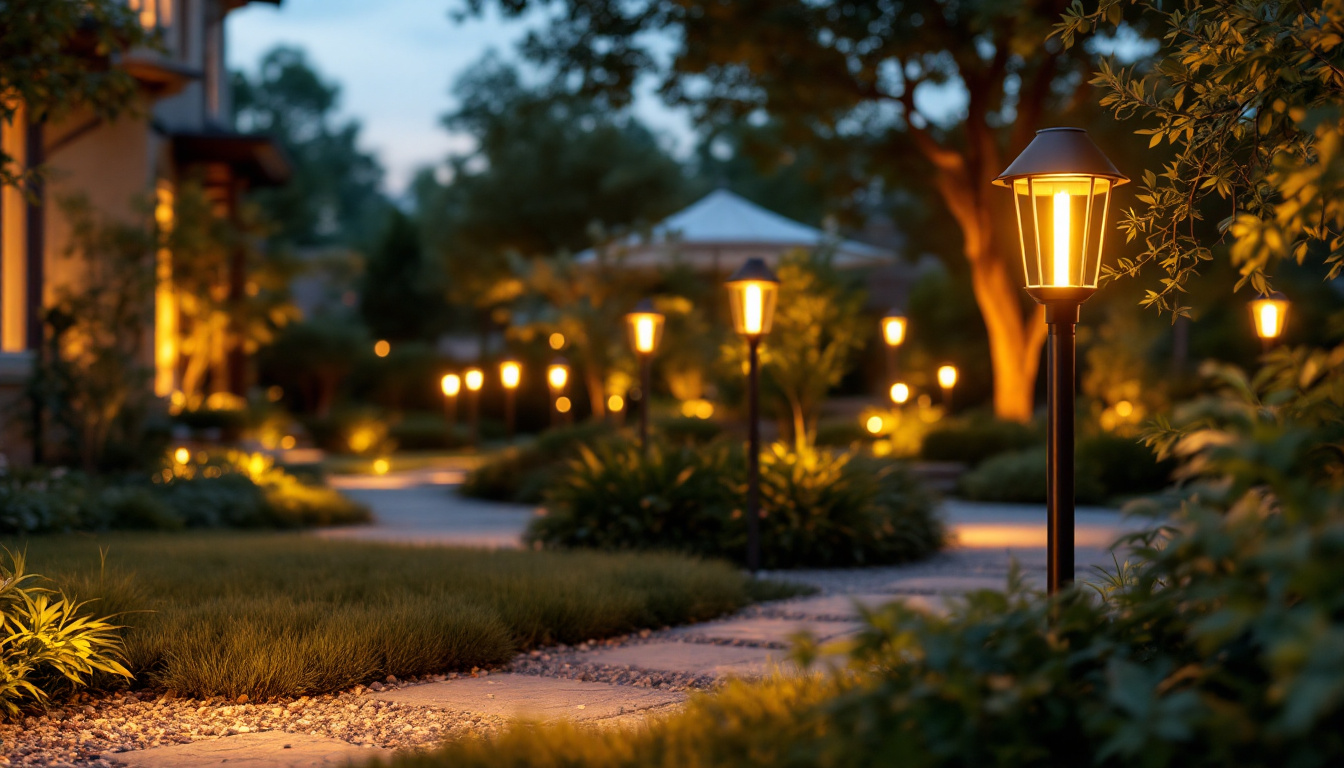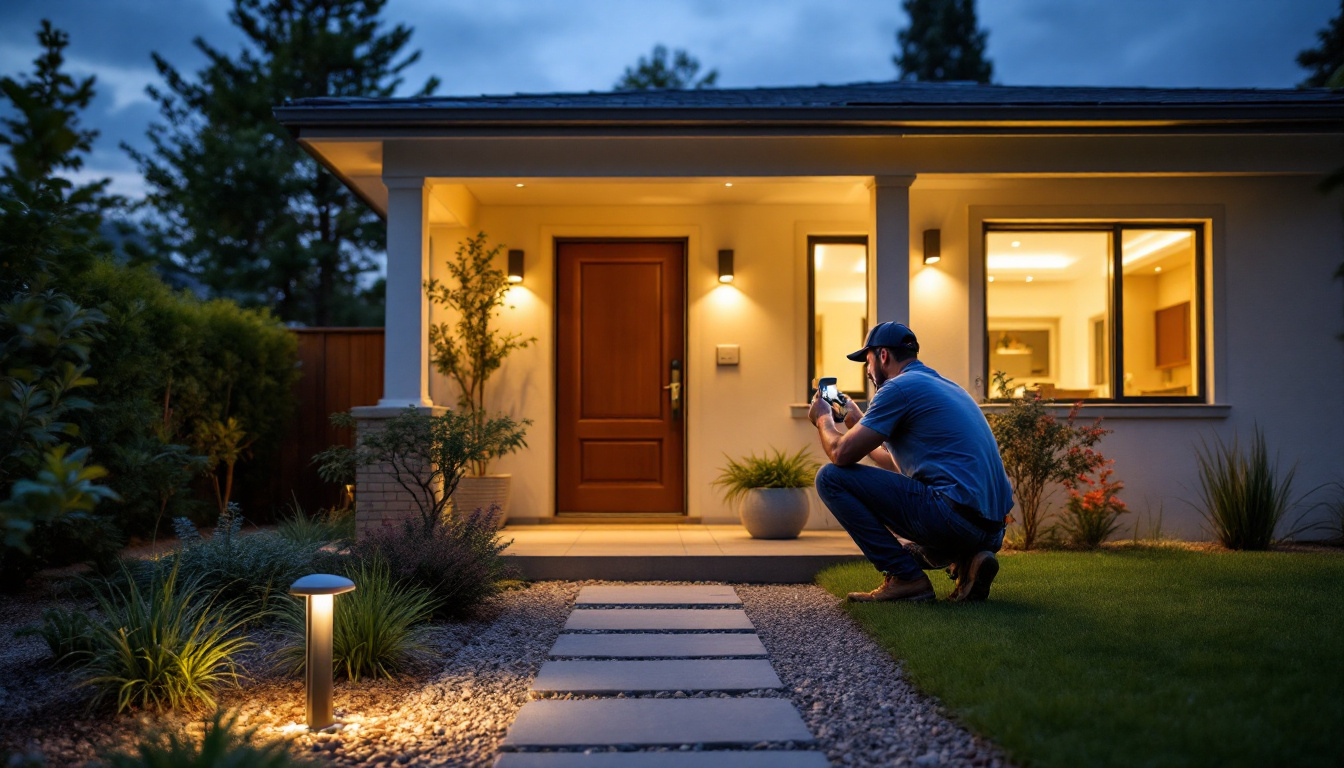
As the demand for sustainable and energy-efficient solutions continues to grow, solar-powered lights have emerged as a popular choice for outdoor lighting projects. For lighting contractors, understanding the intricacies of solar lighting systems is essential for delivering high-quality installations that meet client expectations. This article serves as a comprehensive checklist to guide contractors through the selection, installation, and maintenance of solar-powered lights for outdoor spaces.
Before diving into installation specifics, it is crucial to grasp the fundamental technology behind solar-powered lights. These systems harness sunlight, converting it into electricity through photovoltaic cells. This process not only reduces energy costs but also minimizes environmental impact, making solar lighting an attractive option for eco-conscious clients. The efficiency of solar technology has improved significantly over the years, with advancements in cell materials and designs that allow for higher energy conversion rates, even in less-than-ideal weather conditions.
Solar lighting systems typically consist of several key components, including solar panels, batteries, LED lights, and controllers. Each part plays a vital role in ensuring the efficiency and longevity of the lighting solution. The solar panels, often made of crystalline silicon or thin-film materials, are designed to maximize sunlight absorption, while the batteries, usually lithium-ion or lead-acid, are engineered to withstand numerous charge cycles, providing reliable power storage.
Solar panels capture sunlight and convert it into electrical energy, while batteries store this energy for use during the night or in cloudy conditions. LED lights are favored for their energy efficiency and durability, providing bright illumination with minimal power consumption. Controllers manage the charging and discharging of the battery, ensuring optimal performance. Some advanced systems even feature smart controllers that can adjust brightness levels based on ambient light conditions, further enhancing energy efficiency and extending battery life.
There are various types of solar-powered lights available, each designed for specific applications. Pathway lights, floodlights, and decorative string lights are just a few examples. Understanding the differences between these types can help contractors recommend the best options to their clients based on their needs and preferences. Additionally, solar-powered lights can be equipped with motion sensors, which not only provide security by illuminating areas when movement is detected but also conserve energy by turning off when no one is present.
Pathway lights are ideal for illuminating walkways and gardens, while floodlights offer broader coverage for larger areas. Decorative string lights can enhance ambiance in outdoor spaces, making them perfect for events or gatherings. By familiarizing themselves with these options, contractors can provide tailored solutions that meet diverse client requirements. Furthermore, many solar lighting products now come with customizable features, such as adjustable brightness settings and color temperature options, allowing clients to create the perfect lighting atmosphere for any occasion. This versatility not only enhances the aesthetic appeal of outdoor spaces but also encourages more homeowners to consider solar solutions as a viable alternative to traditional lighting methods.
Before installation, a thorough assessment of the site is essential. This evaluation will influence the choice of solar lights and their placement, ensuring optimal performance and aesthetic appeal.
One of the most critical factors in the effectiveness of solar lights is sunlight exposure. Contractors should assess the site to determine areas that receive adequate sunlight throughout the day. Factors such as trees, buildings, and other obstructions can significantly impact the amount of sunlight available for charging the solar panels.
It is advisable to conduct a sun path analysis to identify the best locations for solar lights. This analysis will help in selecting spots that maximize solar exposure, ensuring that the lights operate efficiently during the night. Furthermore, it is beneficial to consider the seasonal changes in sunlight patterns, as the angle and intensity of sunlight can vary significantly throughout the year. By taking these variations into account, contractors can optimize the positioning of solar lights for both summer and winter months, ensuring that they remain effective regardless of the season.
Local climate conditions can also affect the performance of solar-powered lights. In regions with frequent rain or snow, contractors should choose lights designed to withstand harsh weather conditions. Additionally, understanding seasonal variations in sunlight can help in selecting solar lights with appropriate battery capacities to ensure consistent performance year-round.
For example, in areas with long winters and shorter days, selecting solar lights with larger batteries can provide extended illumination during darker months. This consideration is crucial for maintaining client satisfaction and ensuring that the lights function effectively throughout the year. Moreover, it is important to evaluate the materials used in the solar lights, as some may be more resistant to corrosion and damage from extreme temperatures and moisture. Selecting high-quality, durable materials can significantly extend the lifespan of the lights, reducing maintenance costs and enhancing the overall value of the installation.
Additionally, it is worthwhile to consider the potential impact of local wildlife on the solar lights. In certain areas, animals may be attracted to the lights or may inadvertently damage them. Understanding the local ecosystem can guide contractors in choosing designs that minimize these risks, such as using protective casings or selecting lights that blend seamlessly into the environment. By taking a comprehensive approach to assessing site conditions, contractors can ensure that the solar lighting installation is both functional and harmonious with its surroundings.
With a clear understanding of site conditions, the next step involves selecting the right solar lights for the project. This decision will significantly impact the overall success of the installation.
Brightness is a critical factor in selecting solar lights. The brightness of solar lights is measured in lumens, and different applications require varying levels of illumination. For instance, pathway lights may require around 100-200 lumens, while floodlights for security purposes may need 700 lumens or more.
Contractors should consider the intended use of the lights when assessing brightness. A well-lit area enhances safety and security, making it essential to choose lights that provide adequate illumination for the specific environment.
Battery capacity plays a vital role in the performance of solar lights. Contractors should evaluate the battery specifications to ensure they can store enough energy to power the lights throughout the night. A higher capacity battery will typically provide longer runtimes, which is particularly important for areas that require consistent lighting.
In addition to capacity, contractors should also consider the type of battery used in the solar lights. Lithium-ion batteries are often preferred due to their longer lifespan and better performance in varying temperatures compared to traditional lead-acid batteries.
Proper installation is crucial for the optimal performance of solar-powered lights. Following best practices can help contractors avoid common pitfalls and ensure a successful project.
When installing solar lights, proper mounting techniques are essential to ensure stability and functionality. Lights should be mounted at the recommended height and angle to maximize sunlight exposure and achieve the desired lighting effect.
For pathway lights, a height of 18-24 inches above ground is generally recommended to provide adequate illumination without obstructing the view. Floodlights may require higher mounting to cover larger areas effectively. Additionally, ensuring that the lights are securely fastened will prevent them from being dislodged by wind or other environmental factors.
While many solar lights are designed for easy installation without complex wiring, contractors should still pay attention to any necessary connections. Ensuring that all connections are secure and weatherproof is vital for preventing malfunctions and extending the lifespan of the lighting system.
For solar lights with additional features, such as motion sensors or remote controls, following the manufacturer’s instructions for wiring and connections is crucial. This attention to detail will help avoid future issues and ensure that the lights operate as intended.
Once the installation is complete, ongoing maintenance is essential for ensuring the longevity and effectiveness of solar-powered lights. Contractors should educate clients on best practices for maintenance and troubleshooting common issues.
Solar panels require regular cleaning to maintain their efficiency. Dust, dirt, and debris can accumulate on the surface, reducing the amount of sunlight absorbed. Contractors should recommend that clients clean the solar panels periodically, especially after heavy storms or windy conditions.
In addition to cleaning, regular inspections of the lights and connections can help identify potential issues before they become significant problems. Checking for loose connections, damaged components, or signs of wear can save clients from costly repairs in the future.
Despite proper installation and maintenance, clients may encounter issues with their solar lights. Common problems include dim lighting, flickering, or lights not turning on at all. Contractors should be prepared to troubleshoot these issues effectively.
For dim lighting, checking the battery capacity and solar panel cleanliness is a good starting point. If the lights are not turning on, verifying that the solar panel is receiving adequate sunlight and that all connections are secure can help identify the problem. Providing clients with a troubleshooting guide can empower them to resolve minor issues independently.
Solar-powered lights offer an excellent opportunity for lighting contractors to provide sustainable and energy-efficient solutions for outdoor spaces. By understanding the technology, assessing site conditions, selecting the right products, and following best installation practices, contractors can ensure successful projects that meet client expectations.
Moreover, educating clients on maintenance and troubleshooting can enhance their satisfaction and prolong the lifespan of the lighting systems. As the demand for solar lighting continues to grow, contractors who are well-versed in these practices will stand out in a competitive market.
By following this ultimate checklist, lighting contractors can confidently navigate the complexities of solar-powered lights, ensuring that their installations are both effective and environmentally friendly.
Ready to elevate your outdoor lighting projects with sustainable, energy-efficient solutions? Look no further than LumenWholesale, where we provide lighting contractors with top-quality, spec-grade solar-powered lights at unbeatable wholesale prices. Our extensive selection is designed to meet the highest industry standards, ensuring you deliver reliable and high-performance lighting to every client. Plus, with free shipping on bulk orders, you can enjoy premium lighting at the best value — without hidden fees or compromises. Make the smart choice for your business and explore our wholesale lighting options today, where quality, affordability, and convenience come together seamlessly.

Discover essential tips and best practices for lighting contractors on installing motion sensing outdoor lights.

Discover the top lighting stores in Phoenix and learn how lighting contractors tackle common challenges.

Discover why solar LED lamps are revolutionizing the lighting industry and why contractors should prioritize them.

Discover how lighting contractors are transforming spaces with innovative hanging lantern solutions.